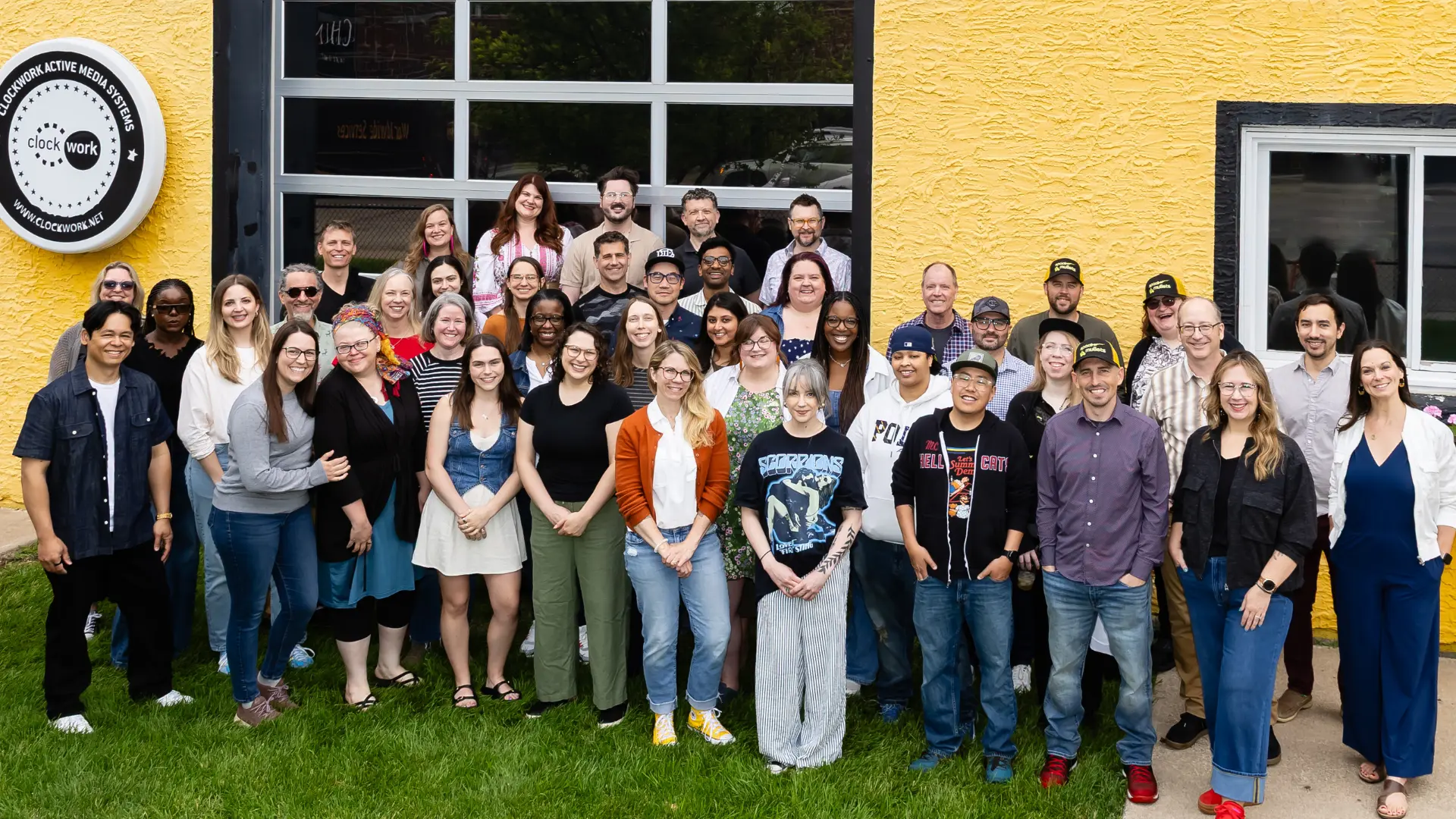It’s safe to say that remote meetings are here to stay. Whether you’re using Zoom, Teams, or another video conferencing tool, there’s a lot to navigate. After a few years of interacting with the floating heads of coworkers and clients, reminding folks they’re on mute, and dealing with laggy connections, meetings can feel energy-sapping. It doesn’t have to be that way. With thoughtful preparation, remote meetings can be energizing and productive.
Consider what everyone needs to successfully participate ahead of time
Planning for a good meeting is a lot like planning for a dinner party. Good conversation and connection doesn’t just happen by accident, it takes planning.
Check your guest list
Do you have the right people for the conversation you want to have? Ensuring the right folks are in the virtual room, will help ensure that your meeting is productive.
Are there any special needs you should consider for your attendees? Getting them to the meeting is only the first part. Do they have what they need to be a successful participant?
- If you’re using a tool they’ve never used before, send some instructions and a link to the tool. At Clockwork, we often use a virtual whiteboard tool called Miro. If we have participants that are new to the tool, we send over a practice board beforehand that has instructions on how to do the key things they’ll want to do during the meeting, like creating and deleting sticky notes.
- If you have a participant with low vision, consider the design of your presentation deck. Send over a pre-read so they can zoom in as needed and follow along on their own screens.
- Think about your participants’ communication styles. Design your activities to balance those that need some thinking time with those who verbally process. If you don’t know, err on the side of including thinking time — use exercises like brainwriting to fully engage the introverted and analytical folks. Pause to allow space for all types of communicators to be heard.
Get ready with context and a clear purpose
Having a clear purpose and objective for a meeting goes a long way toward helping folks prepare. Stating the purpose and what you want to accomplish (the definition of done) ahead of the meeting will help attendees come prepared for the right discussion.
Consider any context that may be needed to make the most of your session. If there is information you can send over ahead of time so that everyone is starting on the same page, do so. Just make sure to be clear about what’s required reading and what you plan to cover in the meeting.
Start by setting the foundation for inclusive collaboration
The best meetings are interactive and collaborative. While you can’t assign seating, as you might at a dinner party, you can help folks get in the right mindset for collaboration.
Set the mood
Collaboration takes a little time and intention. Participants could be coming from other meetings, heads down work time, or even from dropping off a kid who missed the bus. Give folks a little bit of time to transition into the right headspace.
Setting aside some time for introductions and connection will go a long way toward welcoming and getting folks prepared to collaborate effectively. Add a relevant question to your introductions to build relationships. For example — if working on a project for designing custom wedding invitations, you might ask participants to introduce themselves and describe what kind of wedding guest they are.
Warm-up activities are also a great way to get folks prepared for participation. In preparation for a session sketching out new website designs, you might prompt participants to draw as many animals as they can think of starting with a triangle. It gives them a chance to practice with a low-risk activity and helps them let go of perfection.
Lean into the discomfort
Set a safe space and encourage participants to allow themselves to be uncomfortable. Thinking in new ways can make us feel vulnerable. Modeling vulnerability can help others let down their guard. Encourage challenging ideas by asking folks to challenge our own.
Don’t rely solely on your remote meeting tools
Sometimes technology fails. Sometimes folks can’t join and participate in a remote meeting exactly as intended. Say a participant in a brainstorming activity suddenly loses their internet connection and can no longer add stickies to the board. Encourage them to dial in and verbalize while you capture their comments. And, always have a backup plan for any tools you don’t control — if your virtual whiteboard service goes down, having a downloaded PDF version could save you from a total reschedule.
Be the cruise director along the way
Keeping a meeting on track toward accomplishing your goals is one of the trickiest parts of facilitation — you want to nurture enough conversation to get the information you need while also ensuring that you accomplish what you set out to do.
Map out the path to success
Make sure all of your participants know what will be covered in the meeting and how they can best participate. When people know how activities are related, they can be thoughtful about their participation. They’ll feel brought along on the journey and invested in the outcome.
Continue to check in on your definition of done
There’s no rule that says you can’t end early. When you begin a meeting with a clear definition of done, it creates space to make the meeting only as long as it needs to be. Like the goldfish released into a pond, meetings can bloat to fill the allotted time. If you put a clear endpoint on the discussion, it provides folks with the space to take a break, refill their coffee, get going on something else, or decide to hang on and socialize a bit. How much could you accomplish if meetings were only as long as they needed to be?
Involve everyone in pivot moments
Sometimes during a discussion, you learn something new. This new information might present a challenge to accomplishing your goal. It might mean your goal is no longer relevant. Or, it might mean an activity you planned will no longer be effective. While it can be tempting to continue on with the activities you worked hard to plan, a smart pivot will help keep you on track. Call out the new information and how it could change the approach. Ask participants for their thoughts on making a shift. Usually, everyone else is feeling the shift, too. Not addressing it will have participants leaving feeling unaccomplished. If there’s a choice of options, offer a “choose your own adventure.” If there’s a clear single way forward, make a strong recommendation that the group pivot, explaining how the new direction will reach your goals or learn what’s needed to set a new goal.
End with reflection and clarity
Finish out your meetings and workshops with a moment of reflection. Did you accomplish what you set out to do? What needs to happen next? What hot takes are participants walking away with? Does everyone know what to expect next? Ensuring all of these questions are answered will help participants feel accomplished and ready to tackle the next challenge.
Make the most of your meetings, whether you’re in-person or remote
You’ll notice many of these suggestions are helpful for both in-person and remote meetings. Next time you’re preparing for a workshop or meeting, how can you incorporate these steps to set your team up for success?




